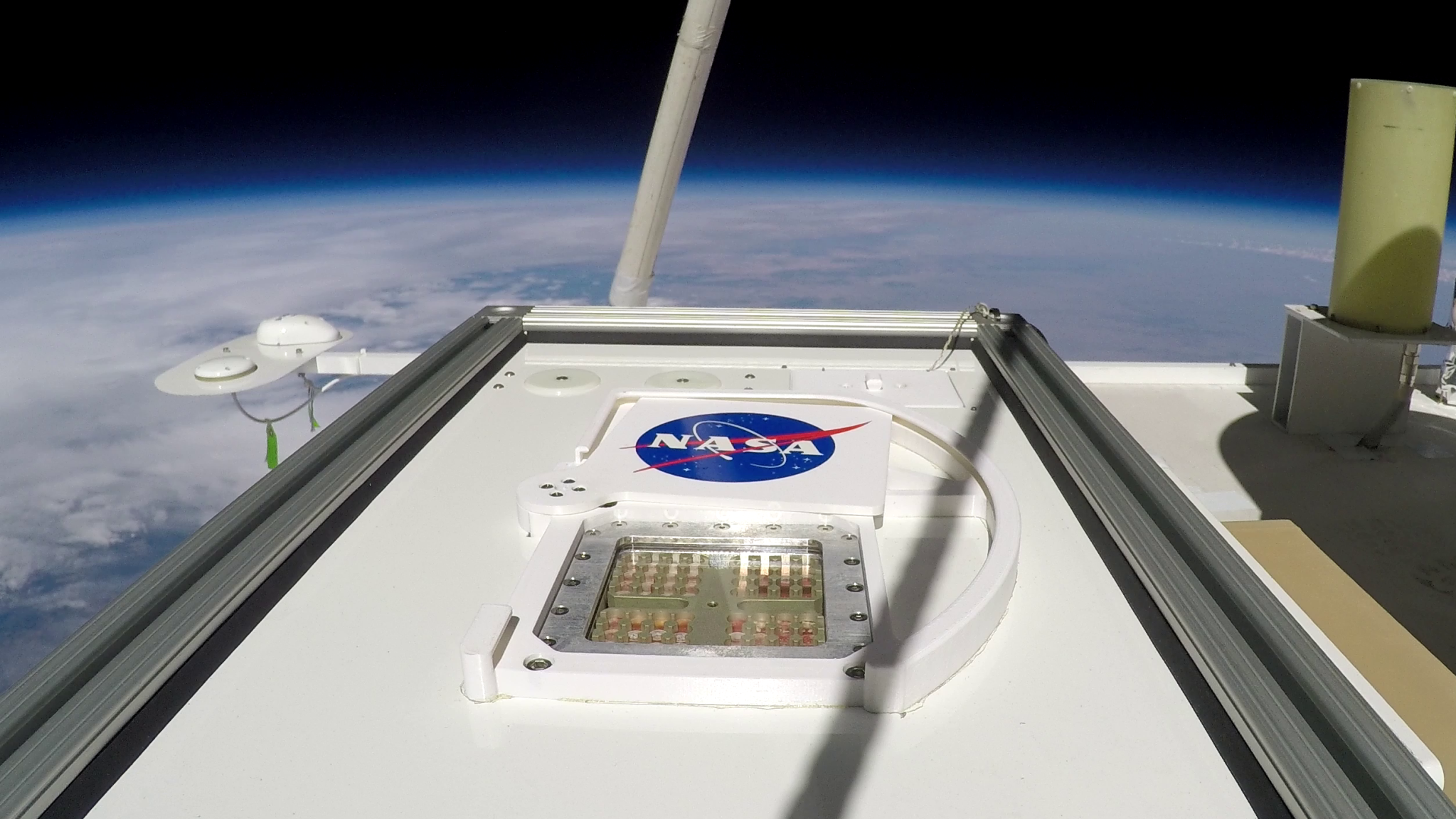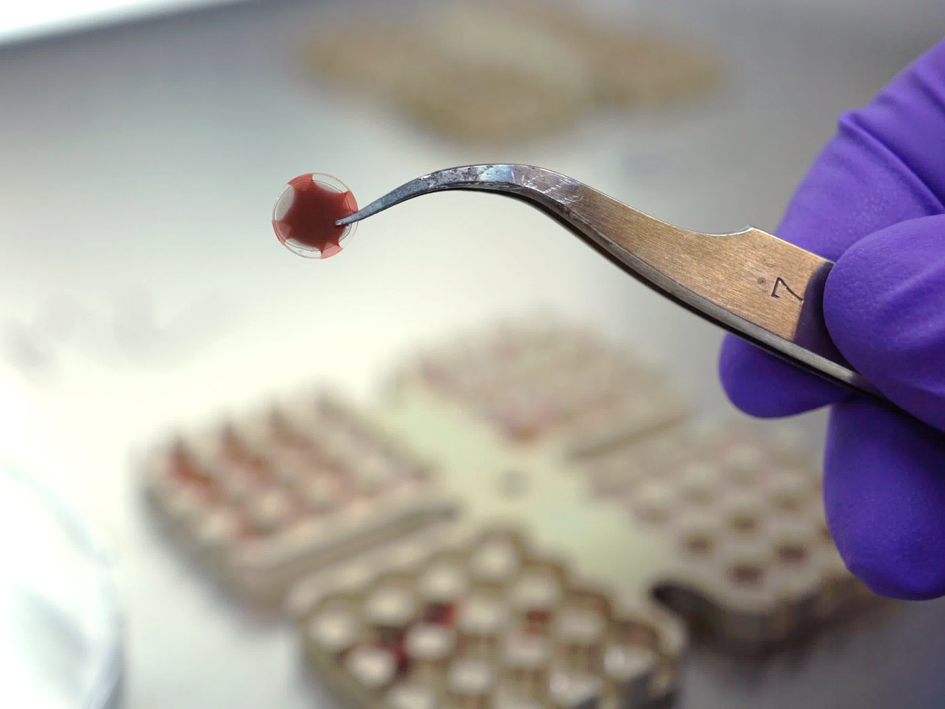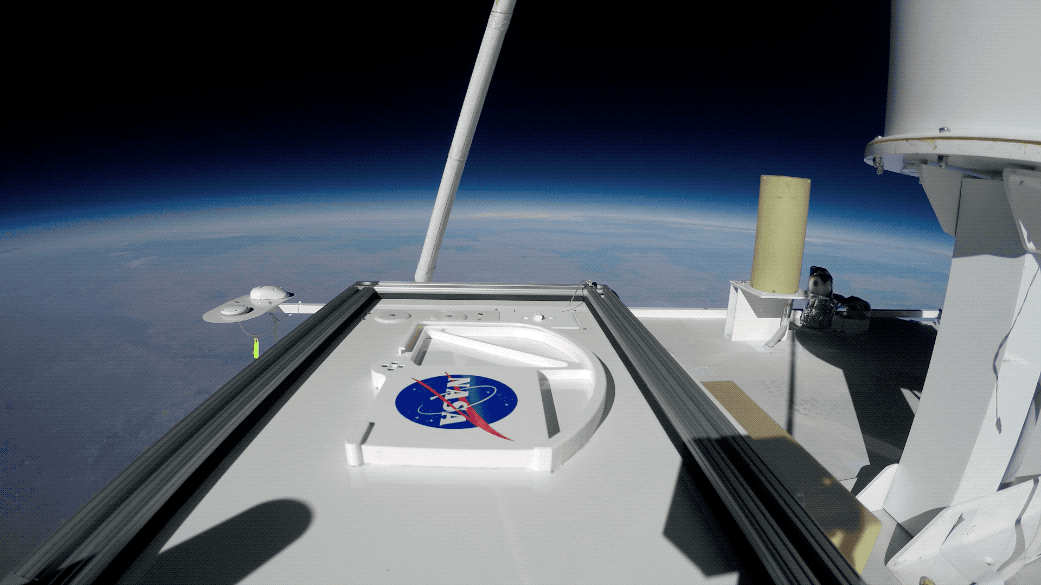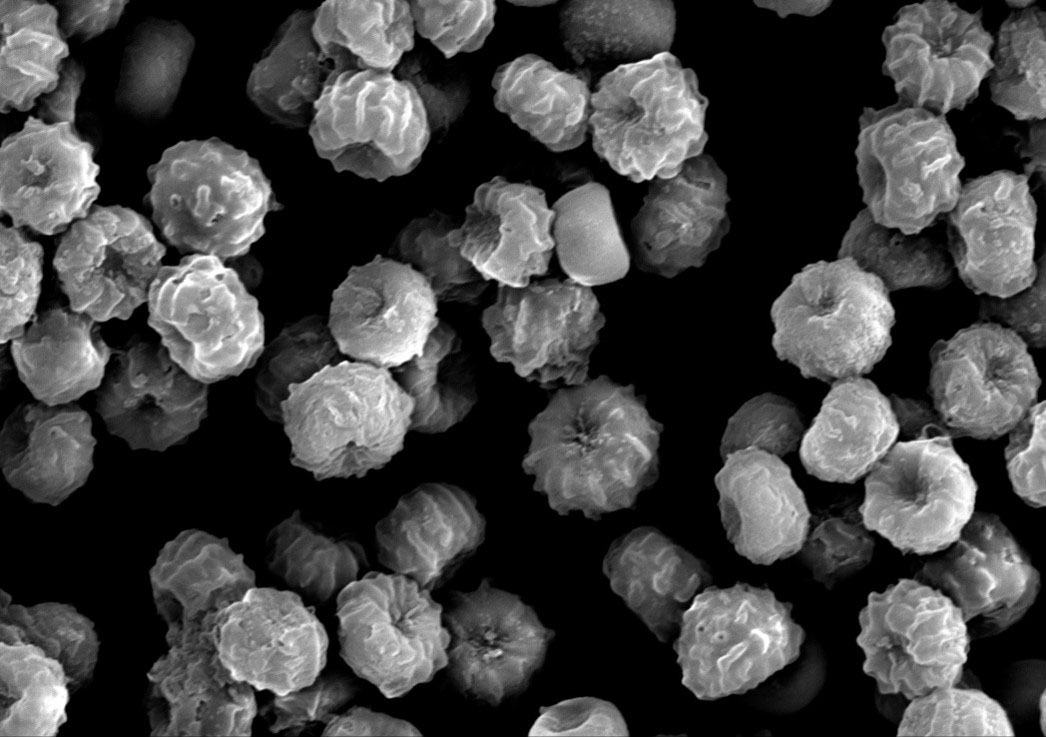
Editor’s note: This feature was updated Feb. 23 to clarify the shutters opened before reaching an altitude of about 24 miles, or 127,000 feet.
If any Earthling microbes were to stow away onboard a spacecraft to Mars, their odds of surviving the trip and the conditions on the surface would be slim. But with an estimated one trillion species of microbes on Earth, and some of them capable of enduring extreme conditions, scientists want to test if any common microorganisms could actually persist on a Mars mission, and if so, what makes them so tough?
The question is more than academic. NASA is keen to ensure spacecraft don’t accidentally contaminate the Red Planet if we’re ever to discover whether Martian life exists. Fortunately, scientists don’t have to risk going all the way to Mars to get some answers.
About 20 miles above Earth’s surface is a layer of atmosphere that resembles the Martian surface in some key ways. With high levels of radiation, low air pressure, coldness, and dryness, this region can be used as a kind of Martian laboratory in the sky.
“If a microbe can hack it up there, above much of the protective ozone layer, it just might be able to survive – however briefly – on a journey to the surface of Mars,” said David J. Smith, a researcher who studies life in airborne environments at NASA’s Ames Research Center in California’s Silicon Valley.
Smith and a team of collaborating international scientists tested out the durability of life in these extreme conditions by launching a variety of boxed-up microorganisms on a large scientific balloon high into the stratosphere. The Microbes in Atmosphere for Radiation, Survival, and Biological Outcomes Experiment, or MARSBOx, included four different species – the most diverse stratosphere test group yet – including dried and dormant bacteria and fungal spores. Results from the research, recently published in the journal Frontiers in Microbiology, found that two of the four types of microorganisms could temporarily withstand these harsh conditions.

“This research gives us a better understanding of which microbes could linger in environments once assumed to be lethal, like the surface of Mars, and gives us clues about how to avoid unintentionally bringing tiny hitchhikers with us to off-world destinations,” said Ralf Moeller, head of the Aerospace Microbiology Research Group at the German Aerospace Center, or DLR, in Cologne, Germany, and the co-principal investigator of MARSBOx along with Smith.
The Flight and Findings
With no jet or rocket engine roar, on the morning of Sept. 23, 2019, a large NASA scientific balloon calmly and quietly soared into the sky from Fort Sumner, New Mexico, with MARSBOx and millions of tiny, well-secured microbial passengers onboard. Before flight, the samples were adhered onto special quartz discs inside aluminum boxes, designed by collaborators at DLR. The boxes were then filled with a special mixture of gases that mimic the makeup of the thin Martian atmosphere, which is almost entirely made of carbon dioxide.
During the balloon’s ascent and descent, specially designed MARSBOx payload shutters ensured the microbes were shielded in darkness, thereby protecting the samples from harmful solar ultraviolet radiation during their journey to and from the stratosphere. On their way to their destination of an altitude of about 24 miles, or 127,000 feet, the shutters opened to expose them to the more intense radiative environment at the edge of space. For more than five hours, the microbes were not only exposed to radiation, but also temperatures that averaged -20 degrees Fahrenheit and extremely dry air that was a thousand times less pressure than at sea level. After returning to Earth, DLR scientists then studied the specimens in the lab and found that two of the four species had survived.
Secrets to Survival
Why were these microbes able to endure the combined stressors of the MARSBOx flight in ways the others could not? Survivors included spores of Aspergillus niger, which is a common environmental fungus that can be used to produce a wide range of useful compounds including antibiotics.

“Spores from the A. niger fungus are incredibly resistant – to heat, harsh chemicals, and other stressors – but no one had ever studied whether they could survive exposed in space or under intense radiation like we see on Mars,” said Marta Cortesão, microbiologist at DLR and co-lead author of the first MARSBOx study. “The fact that after their MARSBOx flight we could revive them demonstrates they are hearty enough to endure wherever humans go, even off-planet.”
Scientists theorize these fungal spores were able to withstand desiccation and high radiation by having pigmentation that acts as a sort of sunscreen, or perhaps a structural feature in the architecture of cell membranes that protects their vulnerable insides, much like layers of clothing can protect people from the bitter cold.
The other microbial survivor was the rarer, but harmless bacteria Salinisphaera shabanensis, chosen to fly because of its ability to thrive in Earth’s extremely salty deep-sea brine pools. Some scientists believe possible briny spots on the Red Planet could be promising locations to search for evidence of ancient microbial life.
“This experiment raises a lot of questions about what genetic mechanisms are key to making microbes able to survive,” said Cortesão. “Do they carry ancient evolutionary traits that provide them the ability to withstand harsh conditions, or does the adaptation to their current environment provide protection for many other environmental challenges?”

What Lies Ahead Is Overhead
Scientists hope with further analysis and future experimentation they can determine which genes or genetic mutations are responsible for the survival outcomes and begin to place these microbes on a spectrum of survivability – from most resilient to most sensitive.
In the meantime, the MARSBOx team is completing an analysis of the data from its first-ever onboard dosimeter, also led by the participating DLR scientists, a device that can measure the amount of ionizing radiation the microorganisms were exposed to in-flight. This information will help them tie together the readings from other onboard instruments with the damaging effects of energetic radiation on the microbes. They expect to publish their dosimetry findings later this year.
And in the next few years, the MARSBOx team plans to launch a follow-on flight test from Antarctica, where due to windows in Earth’s protective magnetosphere, the amount of high-energy galactic cosmic rays from space and ultraviolet radiation from the Sun is even closer to Mars-like levels.
“These balloon-flown aerobiology experiments allow us to study the microbe’s resiliency in ways that are impossible in the lab,” said Smith. “MARSBOx provides an opportunity to predict survival outcomes on Mars and help establish the limits of life as we know it.”
MARSBOx is funded by research grants from NASA’s Space Biology and NASA’s Planetary Protection Research Program within the Science Mission Directorate at NASA Headquarters. The MARSBOx team consists of scientists at Ames and the Radiation Biology Department in the Institute of Aerospace Medicine at the German Aerospace Center, DLR, which also designed the sample container and led the microbiological analyses. NASA’s Kennedy Space Center in Cape Canaveral, Florida, provided engineering support. The NASA Balloon Program Office at Wallops Flight Facility on Wallops Island, Virginia, and the Columbia Scientific Balloon Facility in Palestine, Texas, provided additional support.
For news media:
Members of the news media interested in covering this topic should reach out to the NASA Ames newsroom.
Author: Rachel Hoover, NASA’s Ames Research Center

























